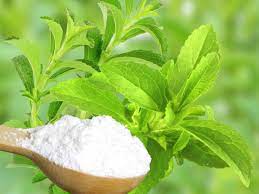
Stevia is an all natural chemical-free sweetener that has a 24-month shelf life. It is used in baking and cooking and has an added benefit of lowering blood sugar and blood pressure. It is also free of artificial flavours and colours. Consumers of stevia in India should look for a reputed brand.
HCMS stevia cultivation training program in Jaipur
The Hahnemann Charitable Mission Society has been working towards agricultural development since 1996. As a professionally managed and ISO certified organization, it has a team of experts in different fields who help farmers in cultivating medicinal and aromatic plants. The organization aims to promote agricultural development in India through innovative technologies.
HCMS organizes a two-day Stevia cultivation training program for farmers. During the course, students will learn about cultivation techniques and marketing strategies. Additionally, they will learn about government grants and loans. They will also learn about organic farming, and waste-land management.
The Stevia family contains around 154 species, but only six of them are widely used as sweeteners. Among these, the most widely used is Stevia rebaundiana, a plant with sweet-tasting leaves and watery extracts. Various types of stevia are available, with MDS-13 and MDS-14 the most suitable for Indian climates. The SRB-128 variety is suitable for northern and southern climates. Its total glucoside content is about 14-15%.
HCMS stevia brand GAIA Stevia
HCMS Stevia is one of the best-selling stevia products in the United States. This brand uses the extract of the stevia plant and is backed by several scientific studies. Its safety has been verified by a panel of experts from the Center for Food Safety and Applied Nutrition of the U.S. Food and Drug Administration (FDA). In addition, the Joint FAO/WHO Expert Committee on Food Additives has evaluated its safety.
The benefits of using stevia sweeteners include adding sweetness to beverages and foods without increasing the calories or added sugars. Also, they don't raise the risk of dental caries. Recent efforts to reduce our sugar intake have led to a greater variety of low-calorie sweeteners on the market.
The company produces stevia tablets and powder for both cooking and baking, and has a wide range of products available at competitive prices. These products can be used to sweeten all kinds of foods. The sweetener has been praised for its natural properties and is a great alternative to refined sugar. It is affordable and safe, and it will help you stay healthy and fit!
Steviocal is an all-natural chemical-free sweetener
In India, Steviocal is one of the leading brands of Stevia. This natural sugar substitute helps you cut down on calories. It is available at reasonable prices and can be bought for as little.
Stevia is the best substitute for sugar and can help people with diabetes lose weight. It is also a healthy alternative to cane sugar and can be used in baking and cooking. This natural sweetener is safe for pregnant women and children. Steviocal is an excellent choice for diabetics and anyone who wants to live a healthier life.
Demand for stevia
Stevia is a natural, zero calories sweetener that is becoming increasingly popular among consumers around the world. There is a growing demand for stevia in the European market, where the supply chain is well established. The sweetener's low calorie content is a key selling point in the region. In addition, rising obesity and diabetes rates in Europe are driving a demand for natural sweeteners.
There are several major players in the global stevia market. These include Tate & Lyle PLC, Archer Daniels Midland Company, and Cargill, Incorporated. Other key players include Sudzucker AG in the U.S. and GLG Life Tech Corp. in Canada. In addition, there are several smaller players, including Sunwin Stevia International Inc. and Zhucheng Haotian Pharm Co. Ltd. in China.
Stevia cultivation has been a tough undertaking for many farmers in India. In the early days, input costs were very high and returns were not immediate. It would take two or three years for the crop to multiply. Many farmers started planting stevia in the 1990s after hearing about the benefits of the product. But the costs are still prohibitive. In addition, the crop cannot be multiplied without expensive techniques such as stem cutting and tissue culture. Farmers in India have been using "hit and trial" methods to figure out which products work and which one

























